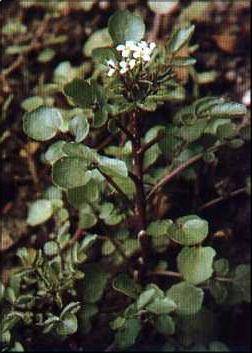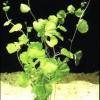Armoracia aquatica
Scientific name: Armoracia aquatica
Family: Brassicaceae
Maximum size reached under cultivation: 0 - 8 cm (0 - 3.15 inch)
0°C 32°F30°C 86°F
Recommended temperature range: 15 - 24 °C (59 - 75.2°F)
Preferred propagation method: Cuttings
Native to: North America
Growth rate: Normal
Recommended substrate: Fine gravel
Lighting requirements: Bright
🌿 Common Name
Lake Cress
🌍 Origin
Native to North America, primarily found in wetlands and along lake margins in the Great Lakes region—including states such as Ohio, Indiana, Illinois, and Michigan.
🌾 Plant Environment
Note: Armoracia aquatica is not a true aquatic plant. It naturally occurs in marshes, wet meadows, and along lake shores, where it may experience shallow flooding during wet seasons. While it tolerates saturated soil and occasional submersion, it does not survive long-term underwater conditions. It is best suited for paludariums, marsh-style displays, or marginal zones of garden ponds.
💧 Growing Conditions
Lake Cress thrives in consistently moist, nutrient-rich substrates with moderate lighting and good air circulation. It prefers temperatures between 15–24°C (59–75°F) and grows well in partial shade. Avoid stagnant water and full submersion of foliage. In cultivation, it benefits from a stable water table and gentle water movement.
🌱 Propagation
This species is most commonly propagated through cuttings. Although it can produce seeds, they are often not viable or are slow to germinate. Stem segments placed in moist, rich substrates will usually root readily. In the wild, broken stems often re-root and form new colonies, making this a robust vegetative reproducer.
⚙️ Difficulty
Easy to Moderate. With the right moisture levels and light, this plant is undemanding. However, it is not suitable for standard aquariums due to its inability to survive complete submersion.
📝 Short Description
Armoracia aquatica, commonly known as Lake Cress, is a delicate wetland species from the Brassicaceae (mustard) family. It features thin, fragile stems and narrow leaves that easily break—a trait that helps with natural propagation. In captivity, it is best maintained in paludarium-style habitats or as a marginal pond plant. It is sometimes incorrectly sold as an aquarium plant, but it will decline quickly when fully submerged. Wild populations are declining due to wetland drainage and habitat loss.
❓ Frequently Asked Questions
-
Can Armoracia aquatica be used in aquariums?
No, not in the long term. While it tolerates wet soil and brief flooding, it will not survive full, extended submersion. Best suited for paludariums or pond margins.
-
What’s the difference between marginal and aquatic plants?
Marginal plants grow at the edges of water bodies and tolerate wet soil or shallow flooding. Aquatic plants can live fully submerged. Armoracia aquatica is a marginal plant.
-
Can this plant be grown indoors?
Yes, in setups that replicate marsh or paludarium conditions. Keep roots constantly moist and avoid covering the foliage with water.
-
Why is Armoracia aquatica sometimes listed as an aquarium plant?
Due to misclassification. Some sellers mistakenly label marginal or emersed-only plants as suitable for aquariums. In reality, this plant deteriorates rapidly when submerged.
-
Is Armoracia aquatica related to horseradish?
Yes. It belongs to the Brassicaceae family and is closely related to Armoracia rusticana (common horseradish). However, it is not commonly used for culinary purposes.

 Cardamine lyrata
Cardamine lyrata